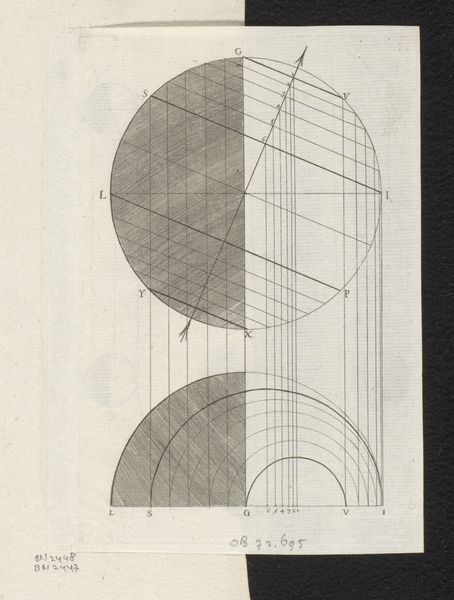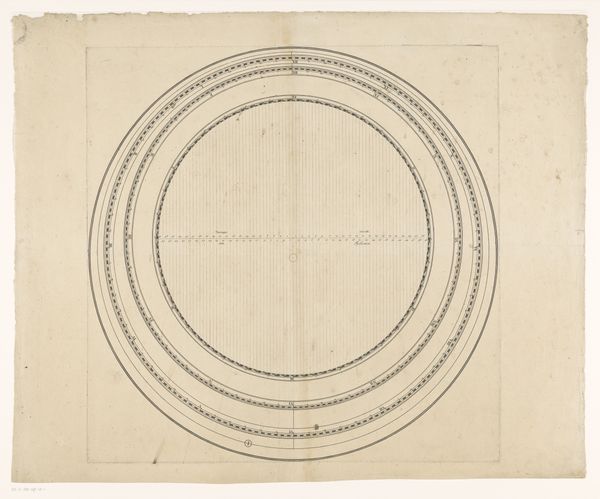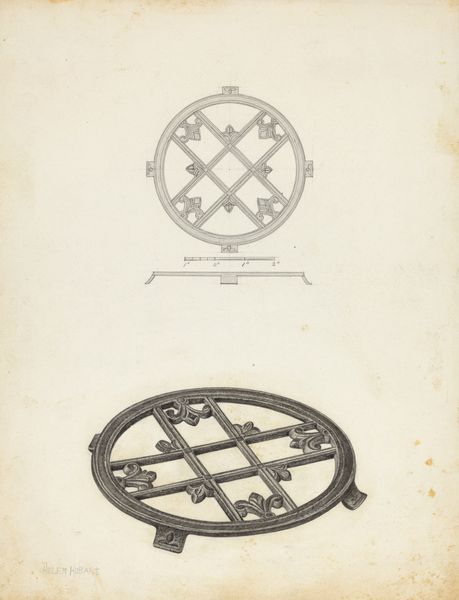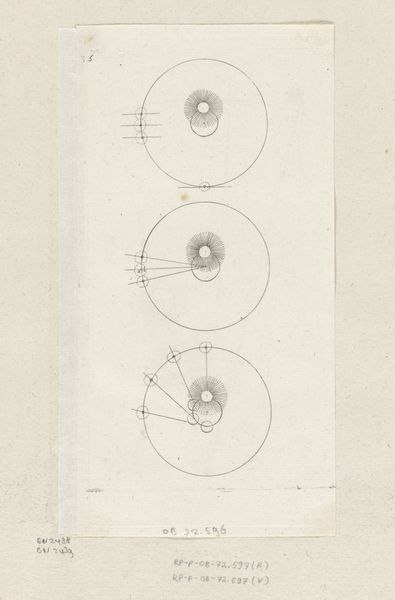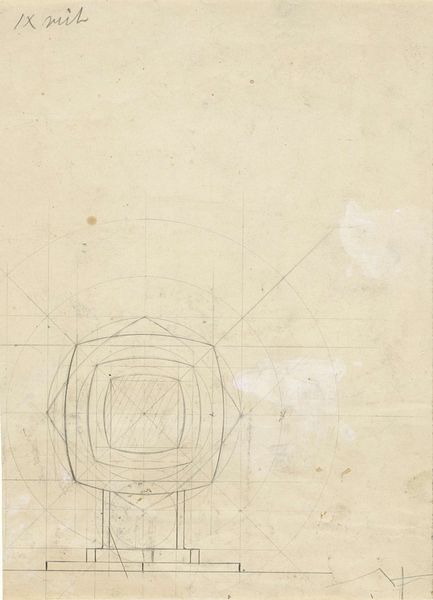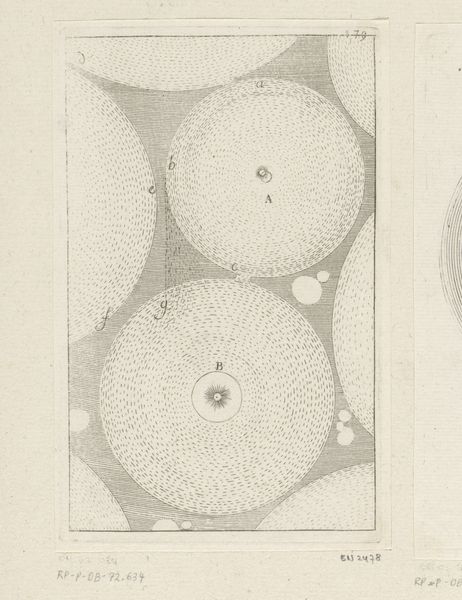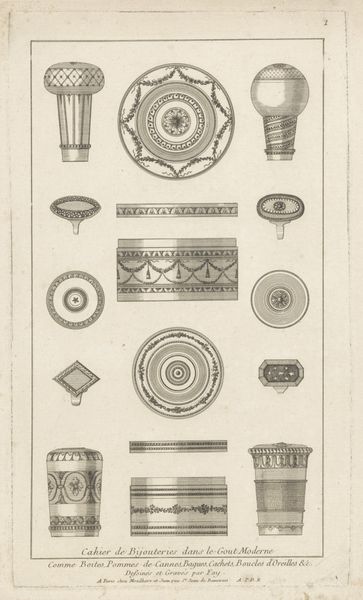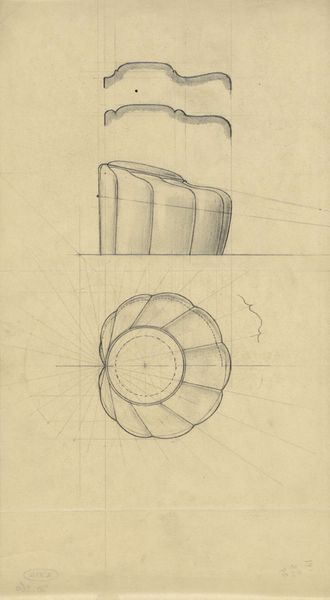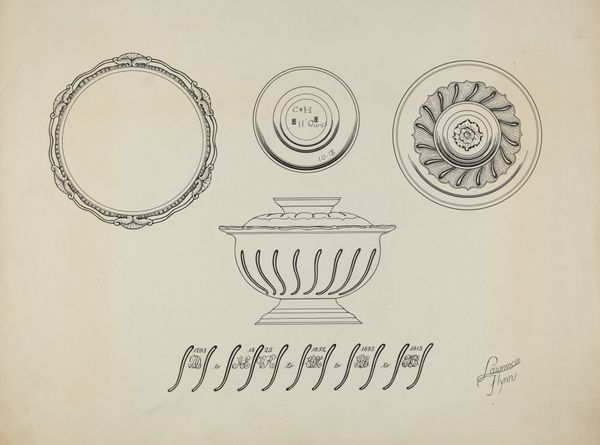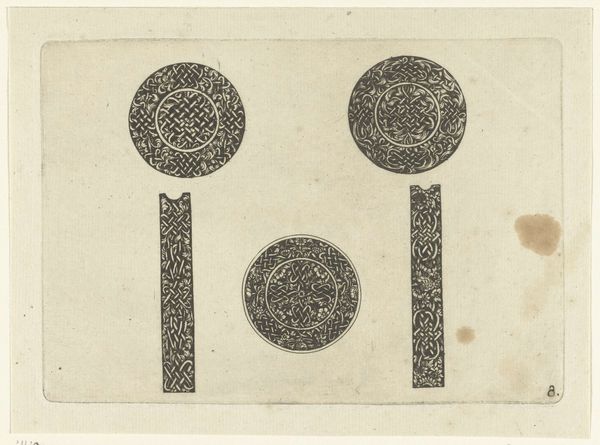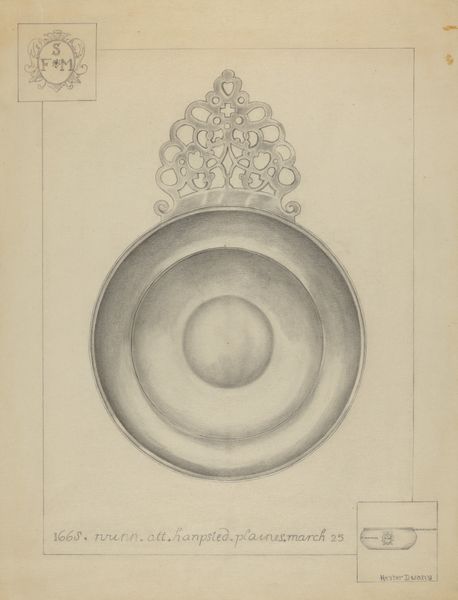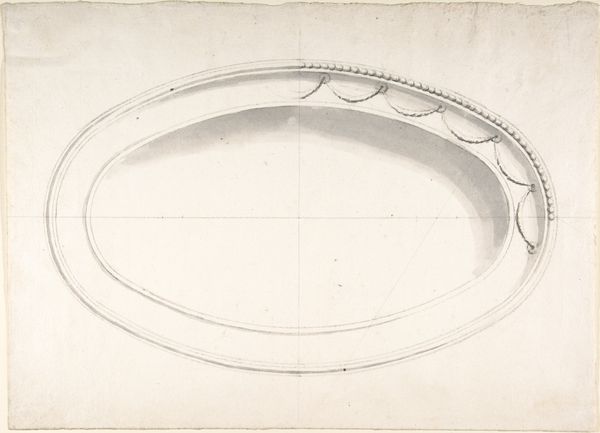
print, textile, engraving
# print
#
textile
#
geometric
#
academic-art
#
decorative-art
#
engraving
Dimensions: height 240 mm, width 333 mm
Copyright: Rijks Museum: Open Domain
Editor: This engraving from 1785 by Hendrik Kloekhoff, titled "Onderdelen voor een maanwijzer" – translated, that's "Parts for a Moon Pointer" – appears to be instructions for a device. It's quite a detailed print! What strikes me most is the very formal and somewhat ornate visual language and the circular construction. How do you interpret this work? Curator: It’s a fascinating piece because it offers us a glimpse into the world of 18th-century science and technology, but from a very specific, and privileged, perspective. Think about it: this isn't just a scientific diagram, it's a beautifully crafted print. It suggests that knowledge itself had a certain status to uphold, visually. How does the fact that it's a *print*, and not simply a set of handwritten instructions, shape your understanding of its purpose? Editor: I guess it was meant to be widely disseminated? Was this level of detailed design common for scientific diagrams at the time? Curator: Precisely! Printing allowed for the mass distribution of knowledge. And yes, the decorative elements are significant. In the context of the Enlightenment, science and art were not as separate as we see them today. Scientific illustrations often served a dual purpose: to educate and to impress. Think about who this 'Maan-Wyzer’ was likely aimed towards – who would have had access to, and use for such technology? Editor: So, it's less about pure scientific data and more about creating an image of scientific authority? Almost like branding for science? Curator: Precisely. This print embodies a certain public image that science was cultivating, linking itself to broader decorative art and societal status. It highlights the performative role of science, not just in discovering knowledge but also in disseminating and displaying it to a particular social sphere. It is worth wondering what someone in the 21st century could possibly use this type of instruction sheet to achieve. Editor: That’s fascinating. It makes you wonder about the intended audience and the socio-economic implications of accessing this type of information. I wouldn't have picked that up initially! Curator: And I find your contemporary view of the artwork particularly poignant, given its complicated past. I guess the more we try to engage with this moon dial the better.
Comments
No comments
Be the first to comment and join the conversation on the ultimate creative platform.


